Have you heard about Mangave? We are thrilled to be bringing in some of these unique specimens that offer your landscape structural interest, wrapped up in a hardy agave and mandfreda crossbreed. Mangave are quickly becoming a hot collectors item, and hopefully this quick look at them will show you why.
As previously stated, Mangave are a cross between the agave plant and a manfreda, where you get the best of both worlds in one plant. These hardy, succulent hybrids offer up a faster growing succulent specimen with a wider range of colors, patterns, and shapes than the traditional agave, while still having the same architectural interest and habit as agave.
Another plus is that Mangave tends to be gentler on us gardeners. If you’ve ever planted, transplanted or just moved an agave specimen, you’ve probably worn the battle scars from their sharp tips. The foliage on Mangave isn’t quite as spiky or mean. Foliage may also take on a wavy or cascading appearance, or form into a truly unique shape (see ‘Praying Hands’ mangave below).
Mangave care is on target with the care you give agave. They perform best in full sun areas in your landscape and when planted in well-draining, dry to average soil. UV light really brings out the vibrant colors and speckles. Kind of like how freckles show up after a day in the sunshine. Mangave are hardy in zones 8- 11, which means our area (8b – 9a); hooray!
Mangave plants flower. Depending on variety, they could produce their tall flower stalks rapidly (2 years), or they may take longer and flower in 8-10 years. The wait seems to be worth it as the towering flower stalks are really quite magnificent. These blooms are sought after by hummingbirds during the day and pollinating bats at night. Once mangave flowers, many of the varieties produce offsets that you can eventually separate for more mangave plantings.
Mad about Mangave® Collection at Rainbow Gardens Bandera Location
Please note that our Mangave collection is currently only at our Bandera location. All photos courtesy our grower Walter Gardens.
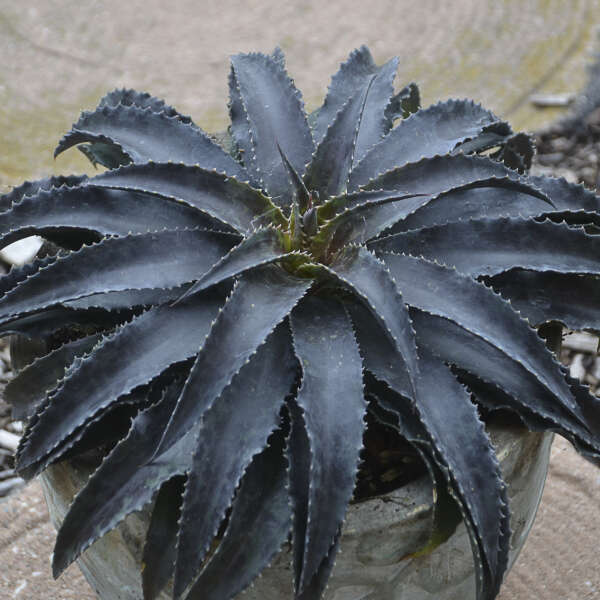

Black Magic: Height:
- 8-10″ T x 20-24″ W
- Heavily and darkly spotted to where foliage looks solid black. Leaves will arch downward when potted in a container.
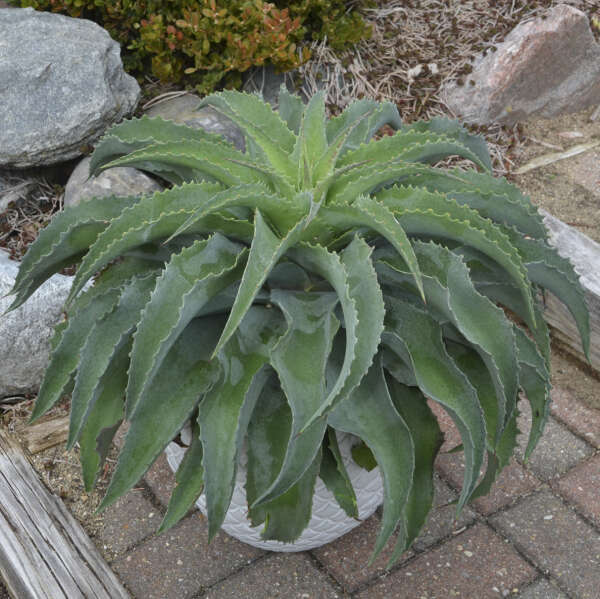

Falling Waters:
- 8-10″ T x 28-30″ W
- Heavily toothed margins on blue-green foliage. Cascading form evokes a tranquil fountain.
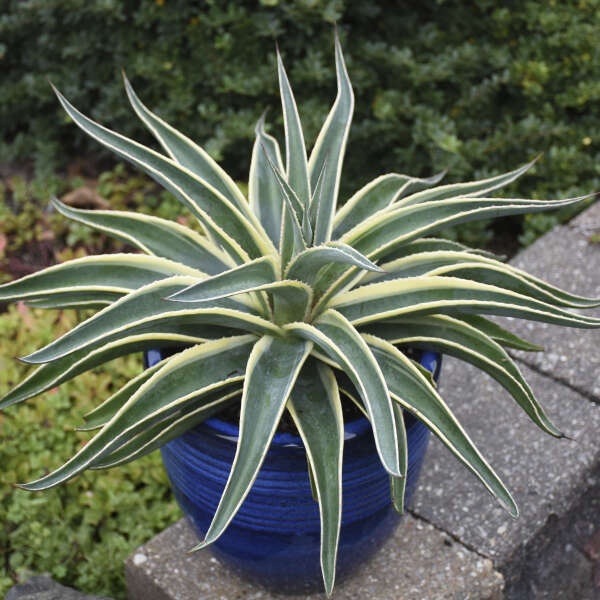

Navajo Princess
- 8-10″ T x 18-20″ W
- Strongly variegated with cream colored margins and blue-green center stripes. Striking.


Mission to Mars:
- 8-10″ T x 20-22″ W
- Intense red hue, brought out by exposure to full sun. Cinnamon-hued margins.
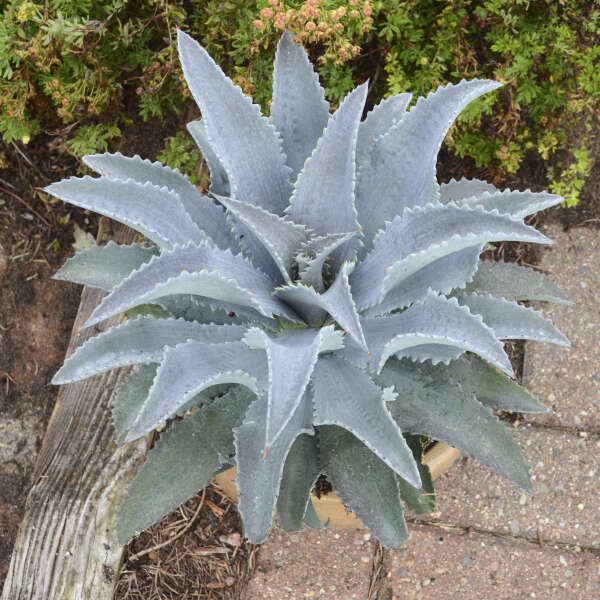

Silver Fox
- 8-10″ T x 16-18″ W
- Pale green-blue foliage that is so light it almost looks like it is glowing white at first look. Thick arching leaves.
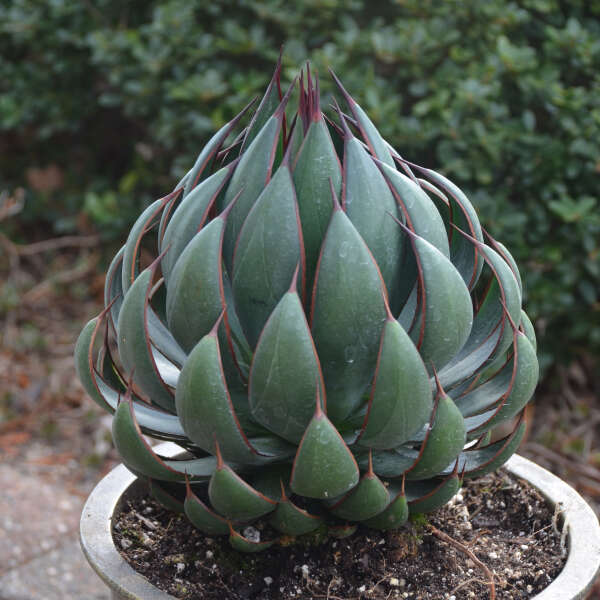

Praying Hands
- 8-10″ T x 8-10″ W
- Dark-green leaves are formed in an upright, teardrop shape, kind of like an artichoke. Cinnamon margins make a striking contrast. Super cool looking!
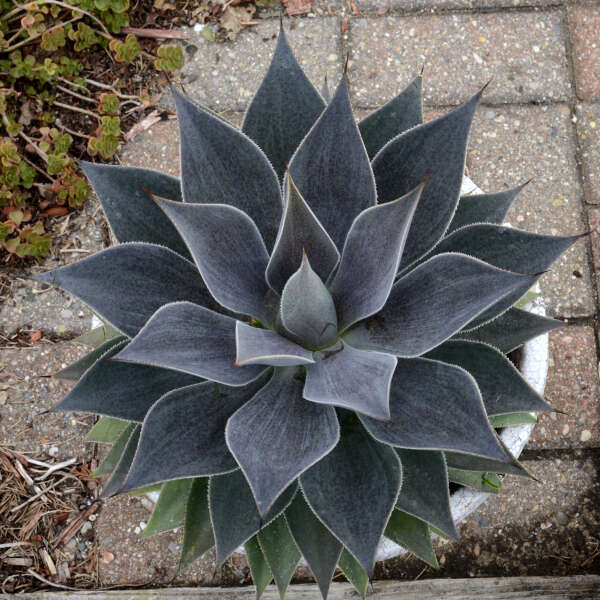

Lavender Lady:
- 8-10″ T x 12-16″ W
- Smoky purple foliage with slight spots in a burgundy hue


Freckles and Speckles:
- 8″ T x 16-20″ W
- Mint-green foliage with a lavender overlay and burgundy ‘freckles’. Adorable!
We have more mangave varieties than what’s been listed (you definitely want to check out ‘Red Wing’, for some gorgeous color), but I just wanted to give you guys a little peek.
You can see more info about these fascinating plants and get a nice tour of some other varieties here. Mangave comes in a range of heights and widths, so you are sure to find the perfect option for your landscape or containers. Be sure to let us know if there are varieties you would like to see us carry. You can even put them on a wish list when you create a Customer Profile with us at our Bandera store at this link.
Once the word gets out about these rare and unique specimens, we bet they go quick.
The Happy Gardener, Lisa Mulroy.

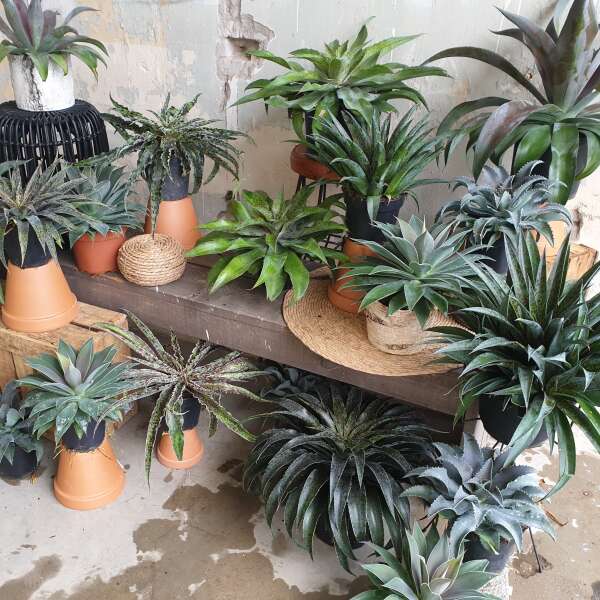
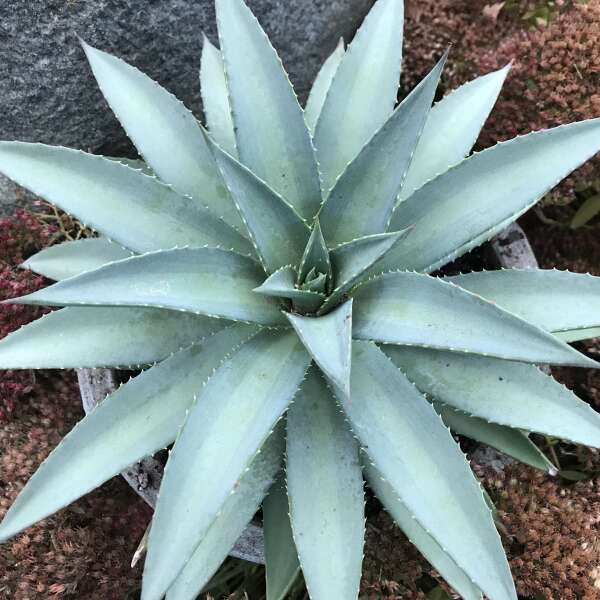
I have loved manganese for years. They survived this last summer beautifully. Thank you for such interesting descriptions.
Oh hooray! We love to hear success stories.